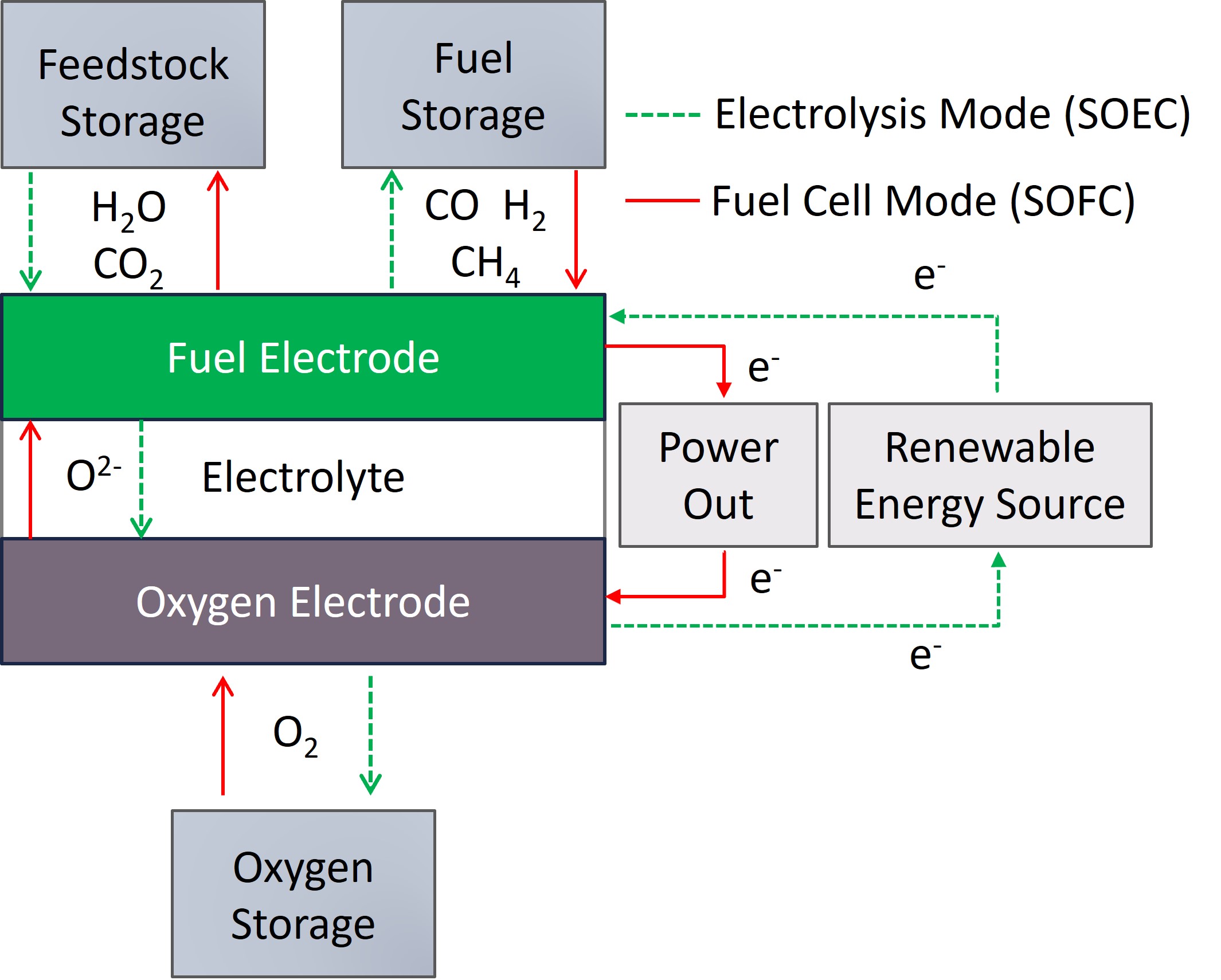
Fig: A Schematic of a Reversible Solid Oxide Cell (ReSOC) System
The integration of renewable energy sources into power grids
presents significant challenges due to their intermittency and
unpredictability. Addressing these challenges, large-scale energy
storage and highly efficient conversion systems, such as reversible
solid oxide cells (ReSOCs), emerge as pivotal solutions. In fuel
cell mode (SOFC), a ReSOC can utilize H2 to generate energy, while
in electrolysis mode (SOEC), it consumes energy to produce H2. The
round-trip efficiency of such a system is of prime interest, which
can be enhanced by reducing temperature or increasing pressure.
Moreover, ReSOCs offer the advantage of utilizing carbonaceous fuels
such as reformed methane and syngas, further improving round-trip
efficiencies. To accurately predict ReSOC performance, a fast and
efficient quasi-2-D cell model has been developed using Python. This
model can simulate both modes of operation and predict local
variations of cell variables. It can incorporate both humidified
hydrogen and carbonaceous gases as fuels, providing insights into
performance under both isothermal and non-isothermal conditions.
This predictive capability is invaluable for designing and
optimizing ReSOC systems for real-world applications.
Keywords: Reversible solid oxide
cell (ReSOC), Round-trip efficiency, Fuel Cells, Electrolysis,
Thermoneutral Voltage, Cell Modelling
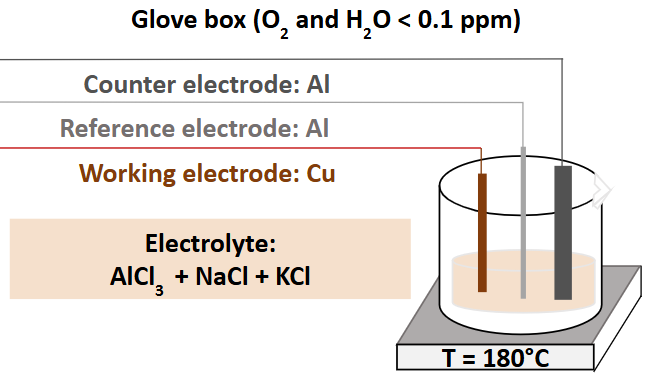
Fig
Aluminium (Al) - Magnesium (Mg) alloys are key materials for several
industrial applications such as the automotive industry, aviation,
household applications, and heat exchangers because of their
lightweight, mechanical and chemical properties, corrosion
resistance, and aesthetics. Electrodeposition is the most versatile
method for the preparation of Al-Mg films due to the reduced thermal
stress on the core material, time, and economic feasibility.
Electrodeposition also has the advantage of the controllable
thickness of Al-films deposited and continuous uniform film
deposition. The Al-Mg alloy electrodeposition reported previously
aimed at depositing powders and dendrites of Al-Mg with a higher
percentage of Mg. The current work electrodeposition of Al-Mg alloys
was deposited using chloride-based molten salt electrolyte system. A
maximum of 3.50 wt. % of Mg was achieved using this electrolyte. To
improve the morphology and Mg content in the deposit, an additive
NaI was used. Addition of 2 % NaI was found to improve the
conductivity of the electrolyte. Hence, it offered a wider range of
current densities when compared to electrolyte without NaI for
galvanostatic depositions. The use of NaI was found to improve the
deposit morphology, composition and thickness.
Keywords: Al-Mg alloys,
Morphology, Alloy composition
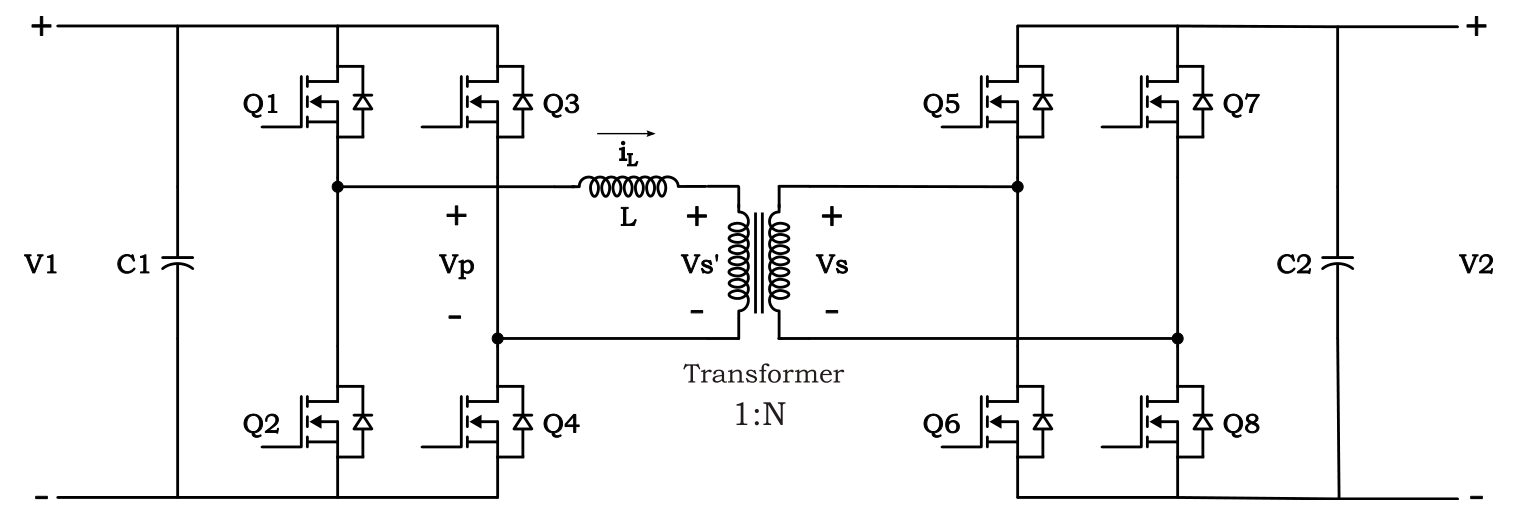
Fig: Dual Active Bridge Converter
With the need for cleaner technologies growing globally, the
electric vehicle (EV) industry received an enormous boost,
increasing global interest significantly. As EV adoption increases,
the need for better charging topologies arises. Increasing the
performance of modern EVs brings about weight and size constraints,
which necessitate high efficiency and high power density chargers.
One such topology involves a DC-DC Dual Active Bridge power
converter, which achieves high efficiency through Zero Voltage
turn-on, reducing switching loss significantly. Another application
of this converter is in DC fast chargers, where converters are
stacked in parallel to achieve high power. This study discusses the
design and operation of a Dual Active Bridge converter in single
phase-shift modulation, the impact of design variables on
soft-switching range and hardware design for a 1kW system in open
loop control.
Keywords:
Electric Vehicles, Power Electronics, EV Charging, Soft Switching,
Dual Active Bridge
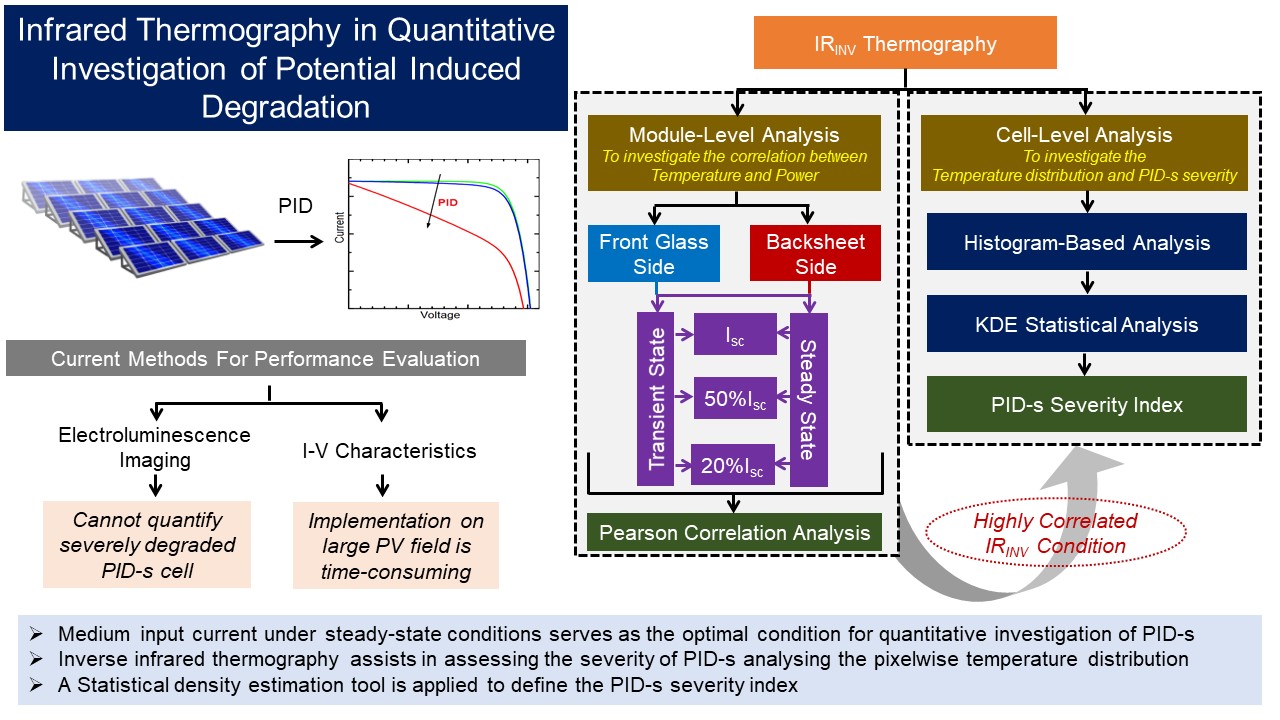
Fig: Research gap and methodology
Potential-induced degradation-shunting (PID-s) is a severe
degradation mechanism in photovoltaic (PV) cells that significantly
impact module performance. To prevent further degradation, periodic
monitoring of PIDs is essential. Current-voltage (I-V)
characteristics and electroluminescence (EL) imaging are commonly
used for quantitative performance evaluation of PID-s affected PV
modules. However, conducting I-V measurements in the field is
time-consuming, while EL imaging has limitations for severely
PID-affected cells with no EL emission. To address these challenges,
this abstract proposes the use of infrared thermography as an
alternative evaluation technique. Infrared imaging offers a faster
and more efficient approach, enabling the visualization of
temperature distributions even in severely PID-affected PV cells
where EL imaging falls short. This paper presents insights exploring
the possibility of a correlation between PV cell temperature and
power output. Analysis of shunting using simulations confirms the
one-to-one relationship between power output and heat dissipation.
Experimental measurements of cell power exhibit a strong correlation
with the average cell temperature in a PV module.
Keywords: Green Roof, Cool Roof,
Energy Savings, Thermal Comfort, Energy Efficiency, Insulation,
Urban Heat Island
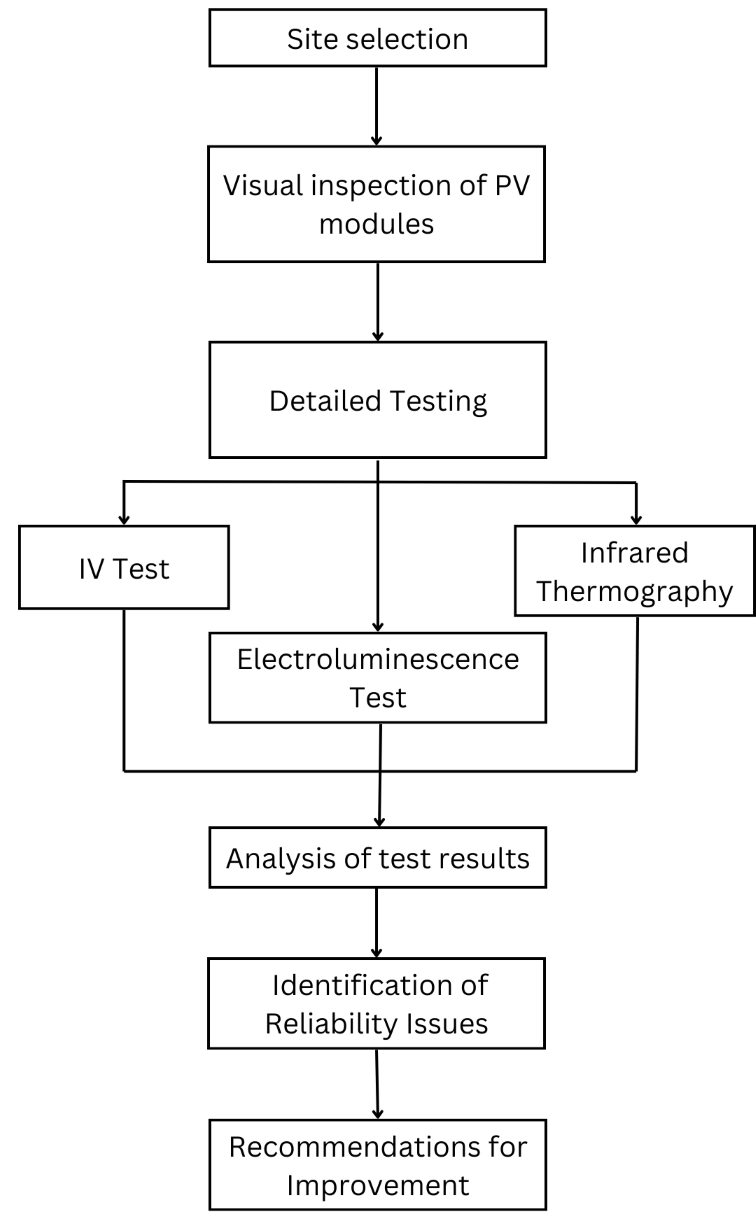
Fig: Block Diagram for the study of PV module degradation
The photovoltaic (PV) industry plays a crucial role in the global
energy transition towards a net-zero emission energy system.
However, to ensure the widespread adoption of PV systems, it is
essential to understand and address reliability challenges
associated with PV module technologies. This study aims to provide
an overview of PV system reliability, focusing on degradation
mechanisms. It analyses PV modules installed on the rooftop solar PV
power plant at IIT Bombay, conducting tests such as visual
inspection, I-V test, electroluminescence tests, and infrared
thermography. Results show a significant decrease in power
generation of up to 99%, signs of PID in the modules, and the
possibility of solder bond failure, which contributes to very high
series resistance. Addressing these challenges is vital for
successful PV integration, prolonging operational lifetimes,
reducing degradation, and lowering electricity production costs.
Ultimately, this promotes the adoption of renewable energy sources
in the global energy landscape.
Keywords: Green Roof, Cool Roof,
Energy Savings, Thermal Comfort, Energy Efficiency, Insulation,
Urban Heat Island